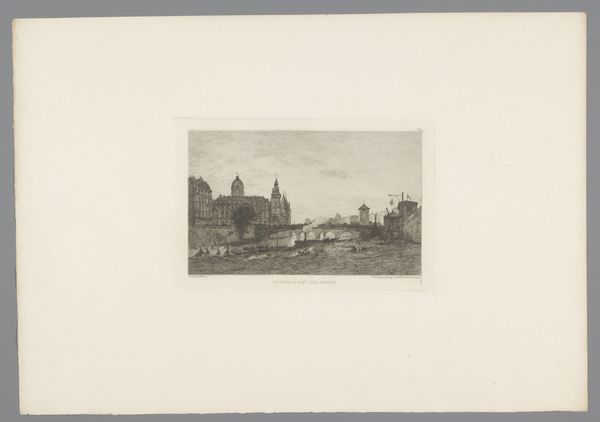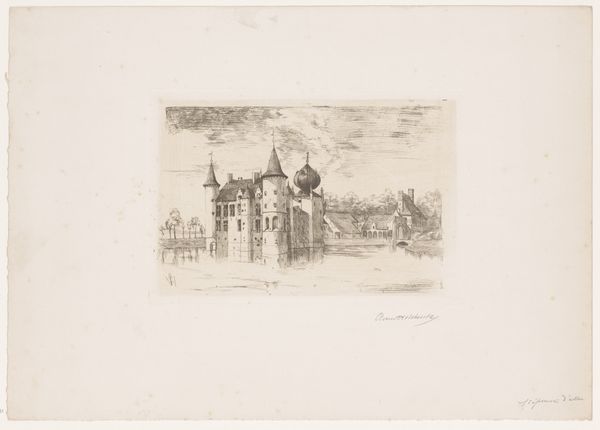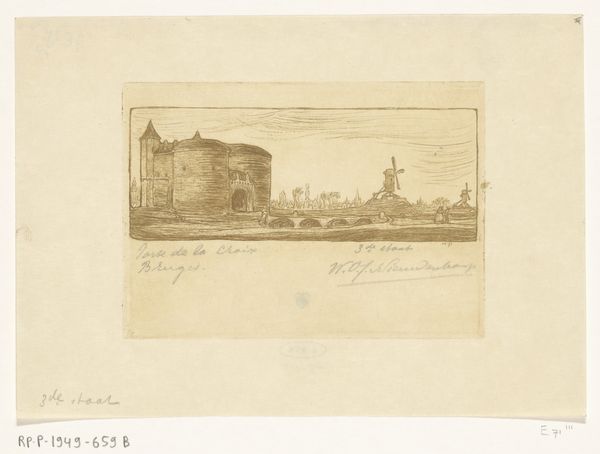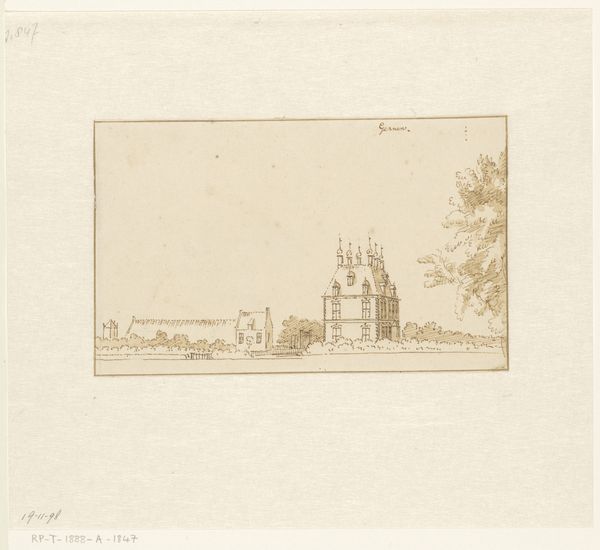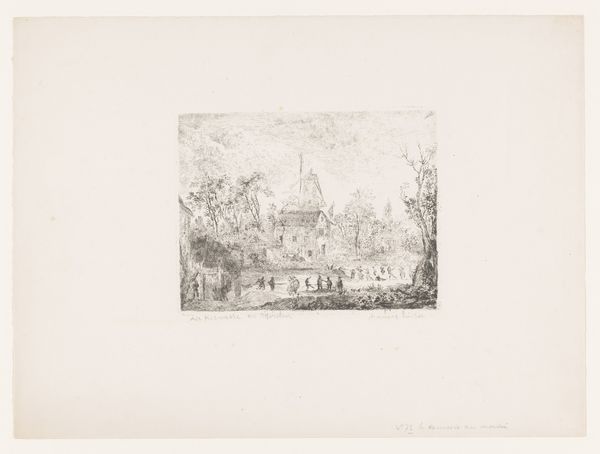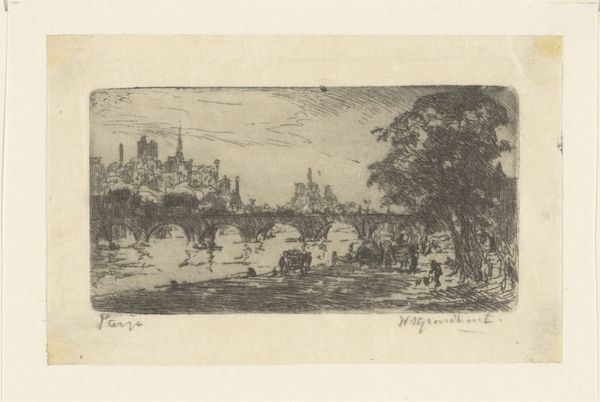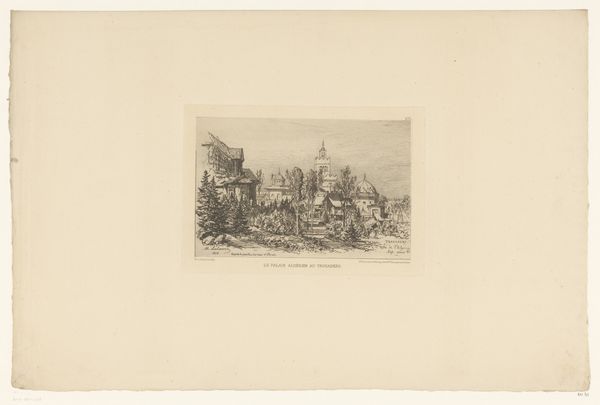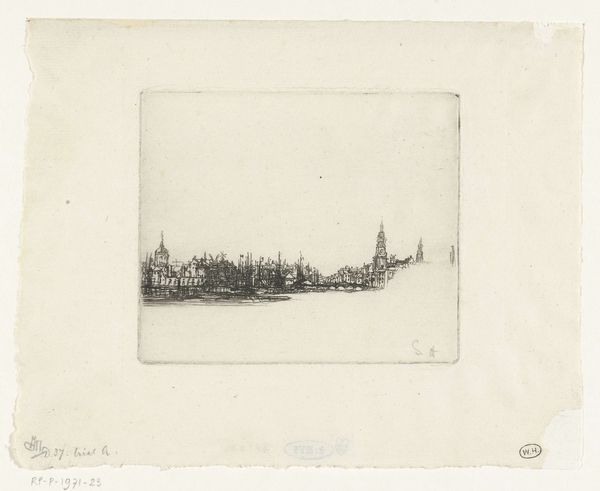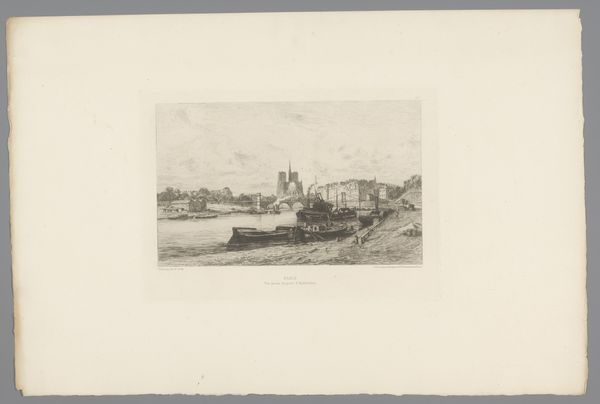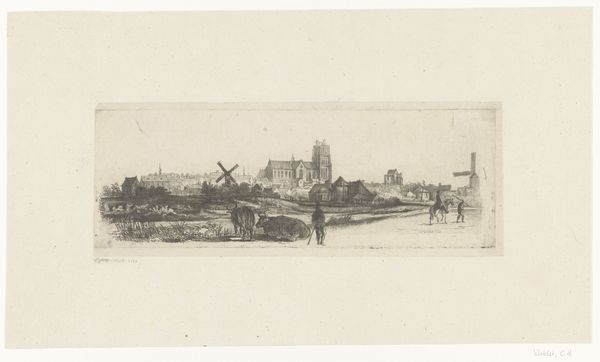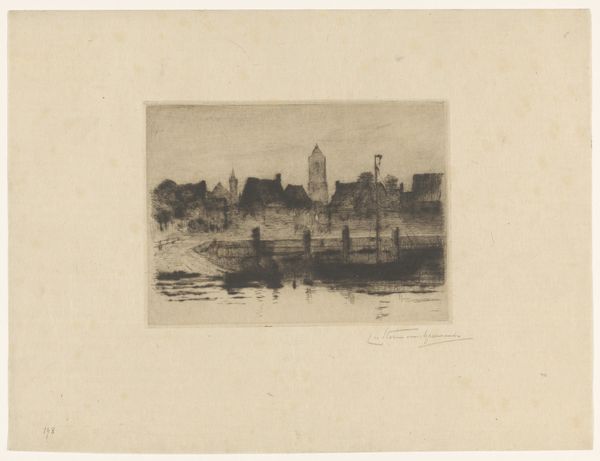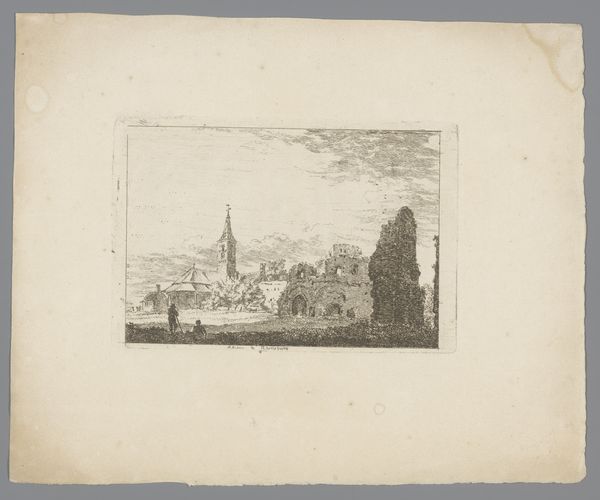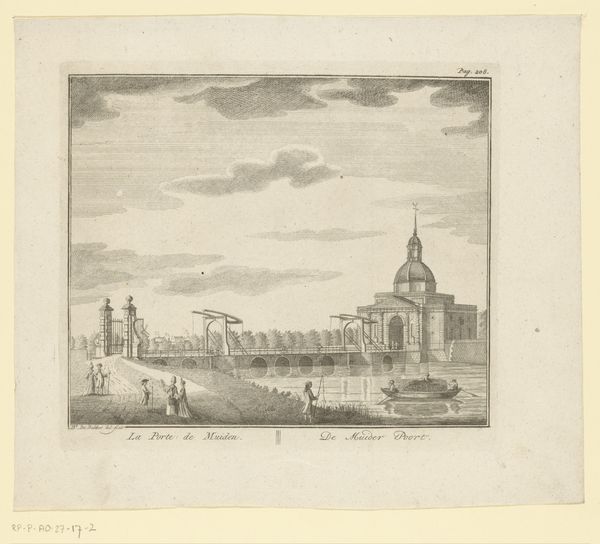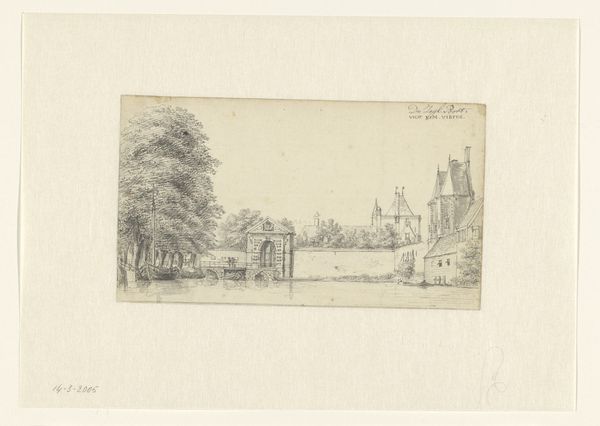
Dimensions: height 100 mm, width 181 mm
Copyright: Rijks Museum: Open Domain
Editor: Here we have Philip Zilcken's "St. Ouen," an etching from 1913 currently held in the Rijksmuseum. I find the muted tones and delicate lines quite evocative. What draws your attention when you examine this print? Curator: As a materialist, I'm fascinated by the etching process itself. Think of the labor involved, the acid biting into the metal plate, the careful wiping of the ink. And then, the print – a multiple, an object made for circulation and, ultimately, consumption. Doesn't the hazy quality remind you of the industrial production emerging at the time, in which many elements appear less sharp than prior traditions of hand-crafted objects? Editor: I see what you mean. It's less about the specific details of St. Ouen, the place, and more about the broader industrial context that gave rise to this mode of reproduction? Curator: Exactly. Look at the buildings. They're almost abstracted, reduced to their basic forms. This isn't a romanticized view of a city, but rather a representation shaped by the capabilities and limitations of the etching process and the means of production available to the artist. How does this consideration change how you interpret this landscape? Editor: It makes me think about the labor that often goes unseen. We admire the "art," but maybe we should also appreciate the skilled labor of the printer, the suppliers of the materials. This approach highlights the economic forces influencing art production, almost like it transforms the etching into an industrial product more so than fine art. Curator: Precisely. Consider also who might have consumed this print in 1913. Was it aimed at the wealthy elite or at a broader audience thanks to its reproductive nature? These material considerations really do invite questions of social class and access, as the art world transitioned from single commissioned pieces to items for broader appeal. Editor: That’s a fascinating perspective. It makes me want to explore other works from this period through a similar lens, examining not just what's depicted, but *how* it was made and *for whom*. Curator: Indeed. And in doing so, we understand so much more about the relationship between art, labor, and society.
Comments
No comments
Be the first to comment and join the conversation on the ultimate creative platform.
